[ page 7 ]
1/72 scale kits of the MiG-15 (NATO "fagot")
... continued from page 6....
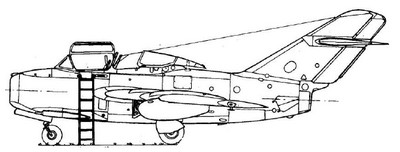
Eduard also released a 1/72 scale kit of the MiG-15 UTI trainer. The airframe is basically a MiG-15 single seat aircraft with a dual cockpit for student and instructor seated under a long canopy. The forward section of the canopy when opened tilts to the right and the aft portion slides to the rear. The UTI has ejection seats and a single canon with a fairing seen below the nose. The landing light is situated as for the "bis" in front of the left gear bay. The air brakes though are still small with the old shape as the first MiG-15 version. The NATO code name for the MiG-15UTI trainer was "Midget".

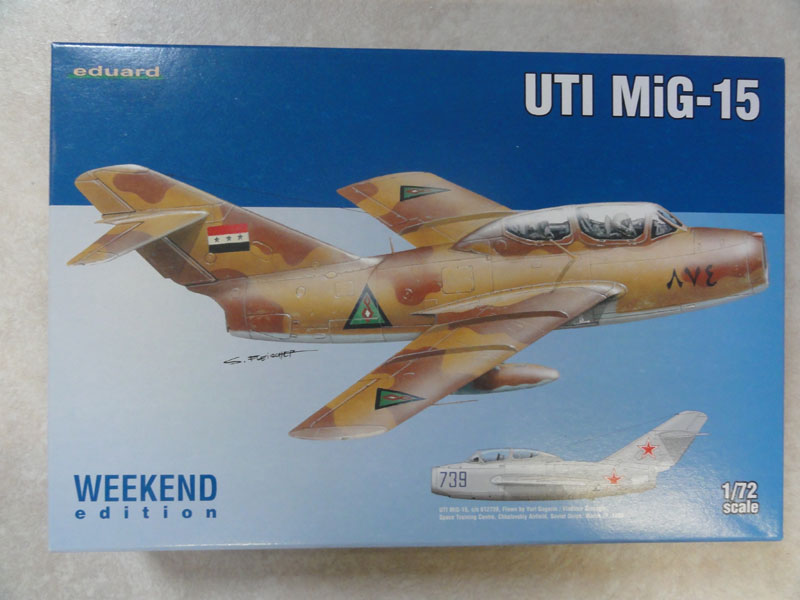
The Eduard kit has many common plastic parts with their single seater kit and is again excellent. The new sprue has the different UTI fuselage. The parts are very nicely moulded with fine engraved panel lines.
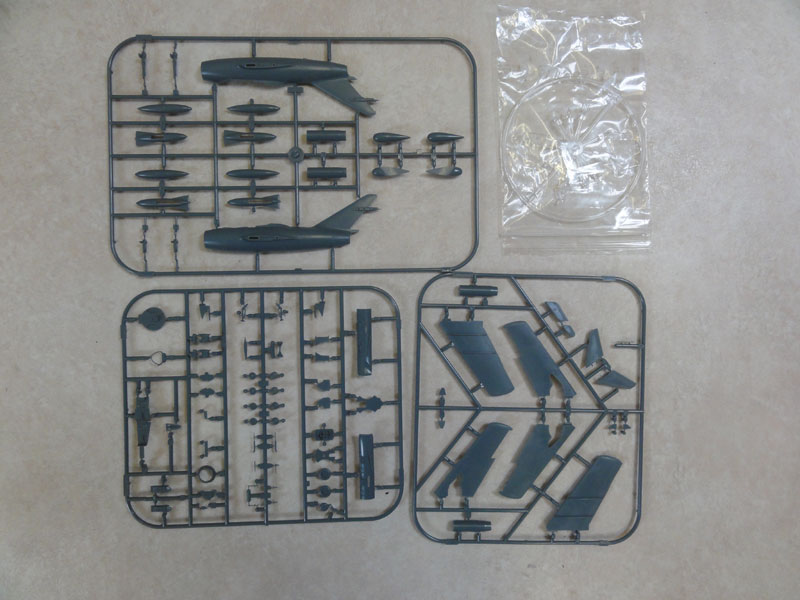
The kit instructions are clear and good. Different main wheel disks are provided but it is not clear which one should be used for which scheme. Probably it varied. Transparent parts are nicely done as well with also the mid blast shield. There are also 2 types of fuel tanks: on pylon or slipper tanks.

Eduard kit #7433 is the "weekend edition" release with decals for two schemes:
[A] MiG-15 UTI Iraq air force in a desert camouflage scheme, 1980s;
[B] MiG-15 UTI of the Soviet / USSR Space training center, including the first Kosmonaut "man in space" Yuri Gagarin that flew this later on in 1968.
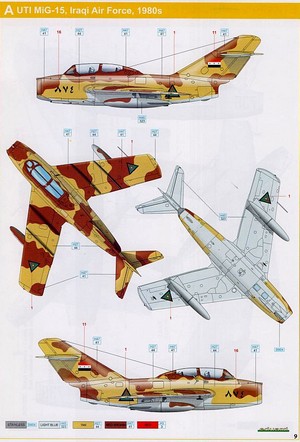
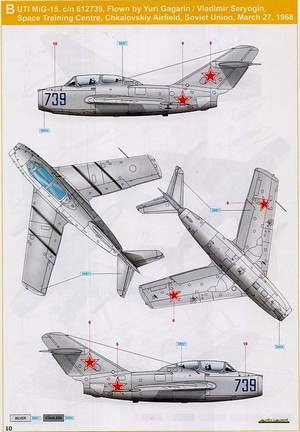
The UTI kit is very good with nice dual interior with side console details and also decals.
I only added seat harnesses, some of these were left overs from the other Eduard kits made. The MiG-15UTI cockpit interior was mostly medium grey.
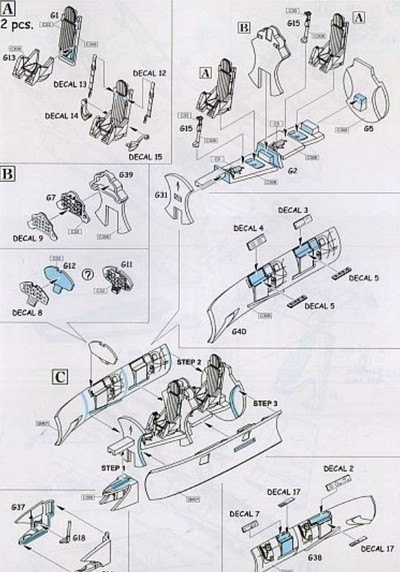
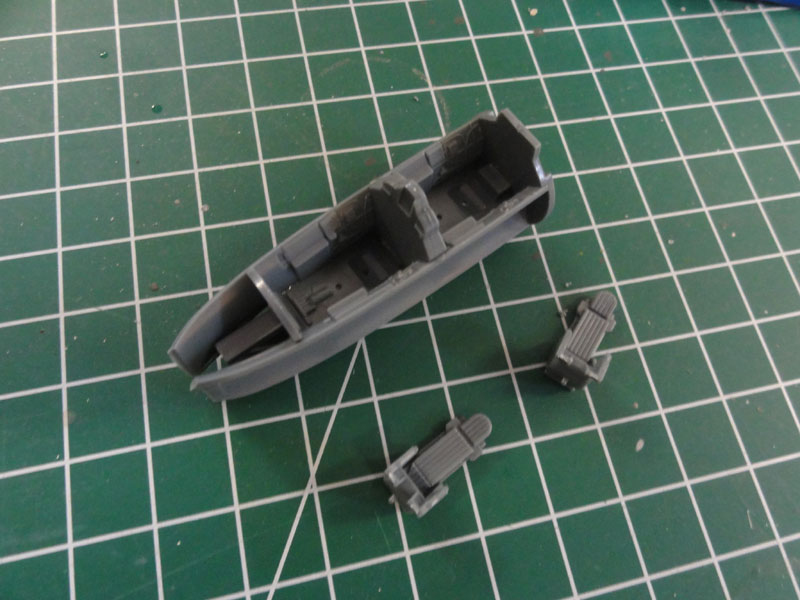
A few Eduard MiG-15UTI kits will be made.
MiG-15UTI Guinea Bissau
The first MiG-15UTI kit was made in a scheme of the Guinea Bissau air force in West Africa.
The book "African Migs" by Tom Cooper, Volume 1/ page 208 has interesting information about the MiGs in this small poor country. Probably 2 UTI aircraft were delivered as early as 1973 with also some MiG-17's. The UTI "Red 34" has a bare metal scheme with 2 roundels on the vertical tail.
Model assembly was quite easy. No putty/ filler is needed, an excellent kit.
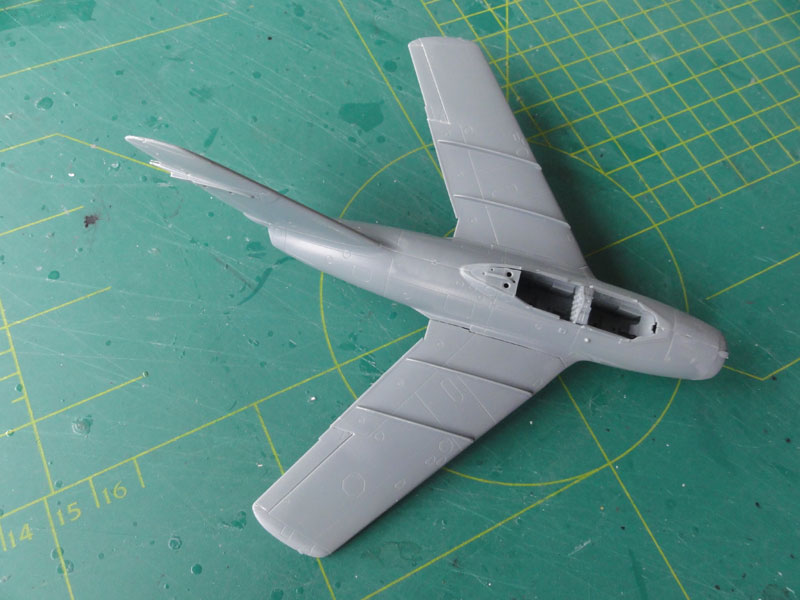
Some white glue was applied to close the tiny gaps at the wing-fuselage joints.
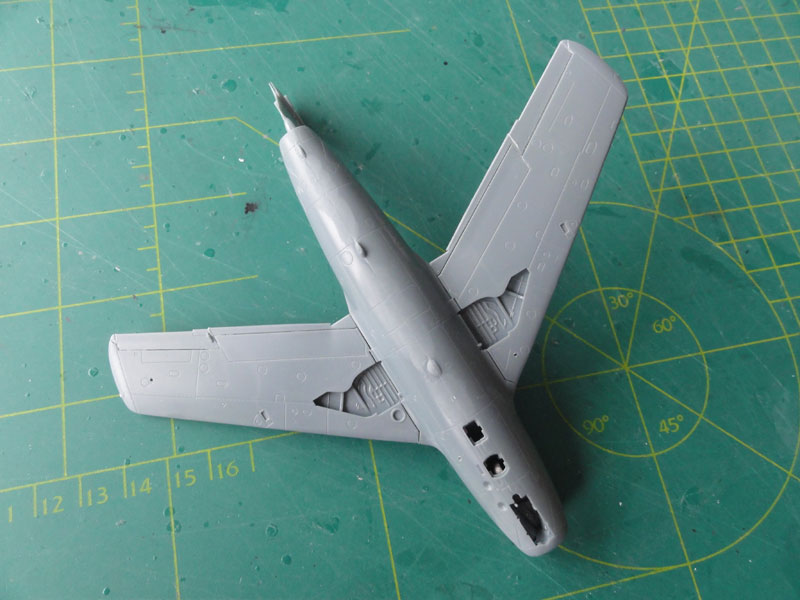
This UTI model got after assembly a base grey coat Revell aqua 75 acrylic to check for any flaws but none were found whatsoever, this kit fits well. The tail planes can be fitted later on as well as the smaller bits like landing gears.
Many UTI's operated by various air forces had the metal scheme and Guinea Bissau is no exception. It is a sort of "alodine" which gives the natural metal some different variations.
A nice "alodine" coat is achieved using the ALCLAD II system with Aluminium ALC 101 coat. The Guinea Bissau aircraft subjected to African conditions are not very shiny, so this colour is a good choice.
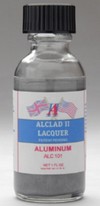
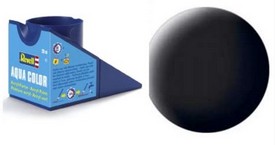
I applied the usual ALCLAD II technique with black under coat with gloss Revell Aqua 07 schwartz and masking with tape at various panels for suggesting some different panels. See page 2 for more info "how to". Also airbrush the smaller parts while still in their sprues dusch as doors and so on. Also the various wing tanks were assembled and airbrushed.
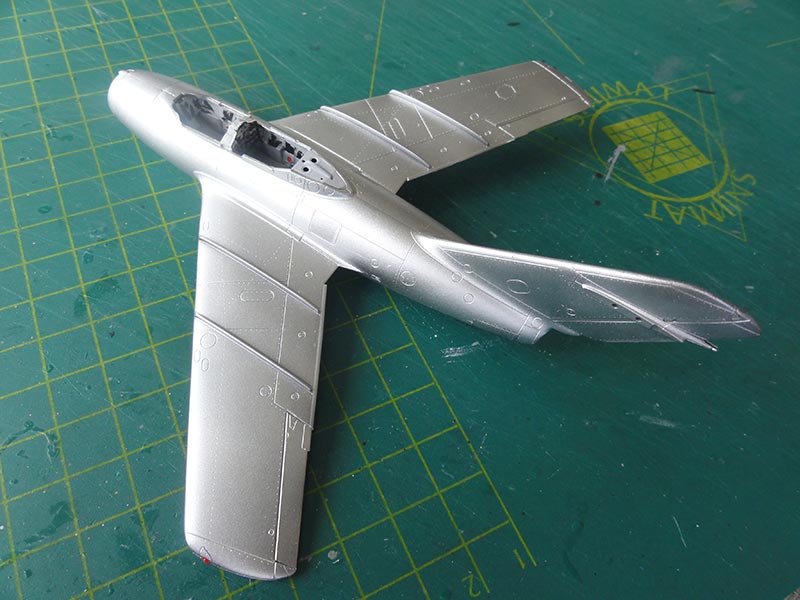
Only a few markings are to be applied for Guinea Bissau so no gloss undercoat was applied. But before setting each decal, the decal was "dragged" through some Johnson Future/Pledge gloss varnish, this will help to avoid "silvering". (any acrylic varnish will do though).
Decals were applied. Roundels came from the Berna MiG-17 set 72-68 or get them from Berna set 72-65. Eduard provides quite some UTI decals for the stencilling and I added a few of these as well in the "black style".
The tyres were painted panzergrau (very dark grey) and the landing gears were now installed as well as the smaller antennas.
Some weathering was done with a pencil with grey pastel around some moving surfaces and hatches. Inside the gear bays and on the wheel legs some thinned black wash was applied with a paint brush.
A Johnson Future/ Pledge gloss varnish coat was now airbrushed to get an even sheen and to protect decals for years to come.
The model was completed by putting a piece of metal needle for the single canon barrel.
Also the UTI has a long antenna wire, this was made from very thin fishing line and set in place with superglue. A pitot tube was set on the right wing half made from a metal needle. Canopies were set open and set in place.
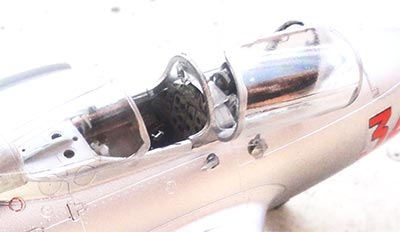
A very nice MiG-15UTI model of an unusual air force is now in the World Air Forces in Plastic collection....
Guinea-Bissau


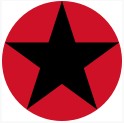
[ area 36,125 sq.km | capital: Bissau | population 1,9 million | GDP USD 900,- per capita nominal ]
In the Portuguese colony of Guinea in West Africa the Portuguese had from 1963 a few armed T-6 Texans and some C-47 transports. A struggle for independence of the local population from the Portuguese rulers led to a conflict with the left oriented rebels. A military marxist coup forced independence though Guinea-Bissau state was recognized not earlier than September 1974. The air arm "Força Aérea da Guiné-Bissau" obtained Soviet aircraft consisting of 2 MiG-15UTI and 5 MiG-17F/ Lim-5 fighters with some additional aircraft arriving the following years. From 1986 some 6 brand new Soviet MiG-21bis and a pair of MiG-21UM trainers were acquired and the MiG-15UTI was retired.
As of today the MiG-21's are for sure unserviceable. Flying are probably only a single C-47, an Antonov AN-2 along with a pair of Mil Mi-8 helicopters from the only base at the very small rudimentary Bissau airport. The country is still very poor.
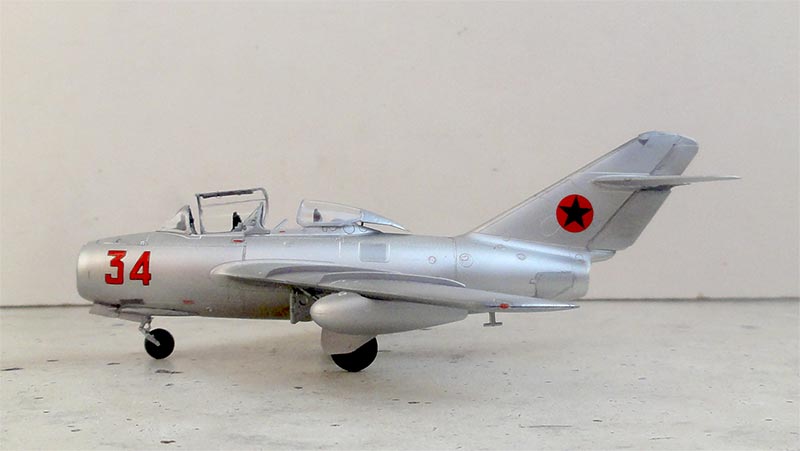
MiG-15UTI, "34" of the "Força Aérea da Guiné-Bissau" , 1987
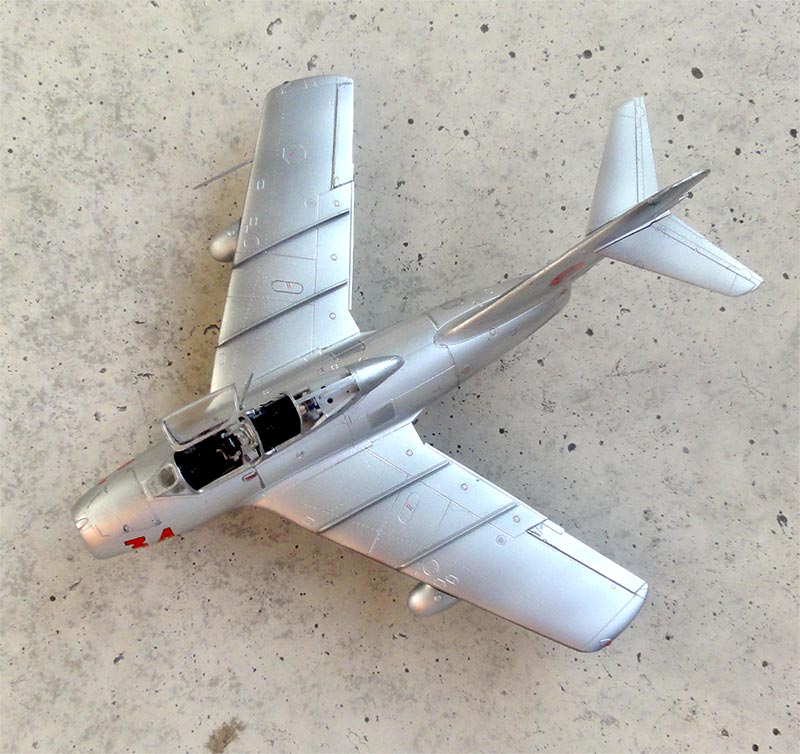

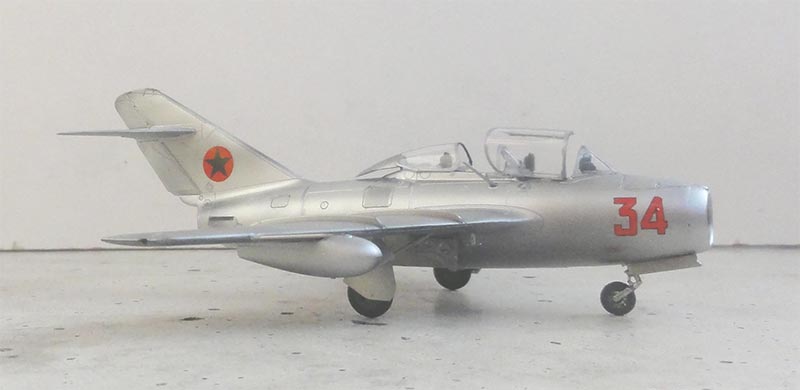
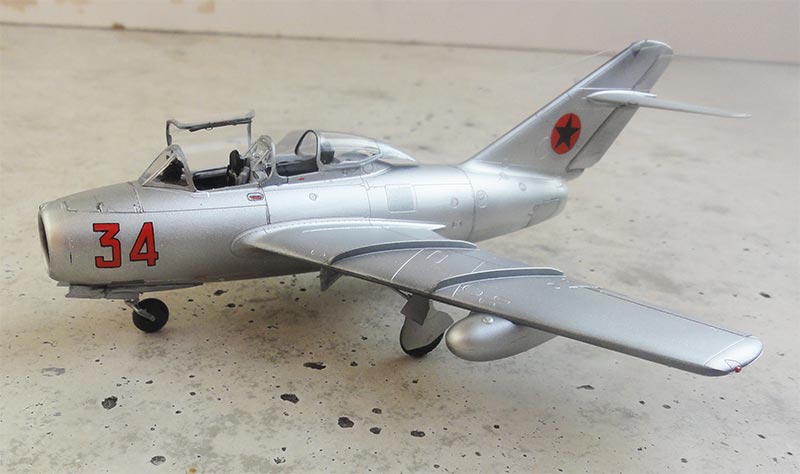
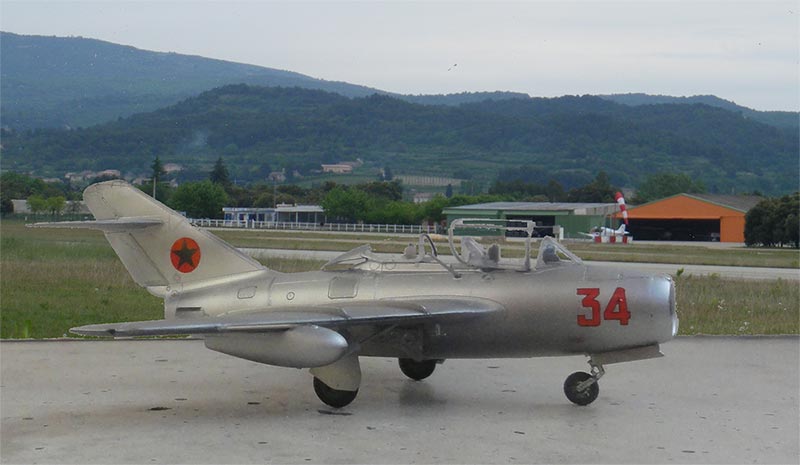
"at Bissau, 1987"
A Google Earth view of the (only) airport near the city of Bissau in Guinea-Bissau; no military aircraft are seen outside.

Another 1/72 Eduard MiG-15UTI model was made, now of the Congo-Brazzaville air force in central Africa. Two UTI trainer aircraft were acquired by this air force in the mid 1970s along with MiG-17 fighters.
The model was assembled and made in a similar way as described above.
The ALCLAD II system was again used but now with Polished Aluminium ALC 105 as coat, this is a bit shinier.
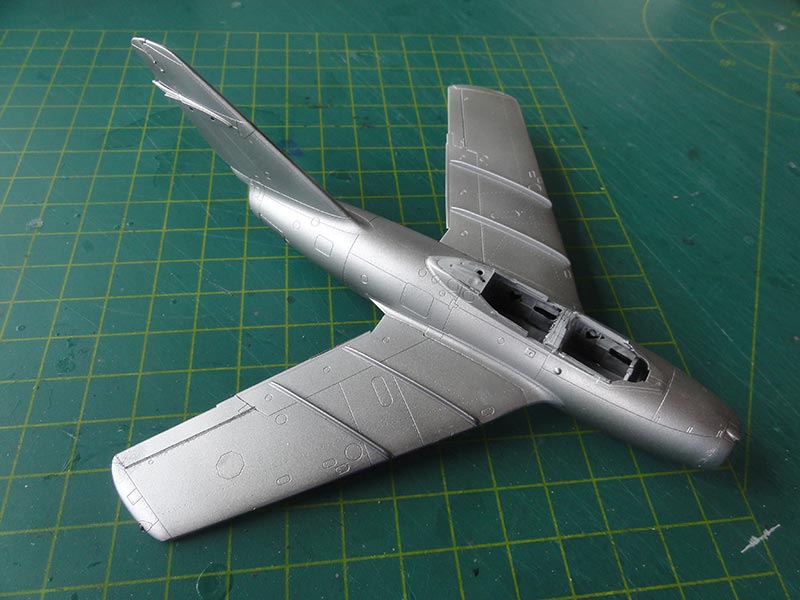
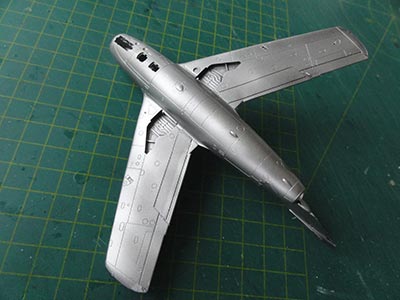
The few roundels came from the Berna decals set for the MiG-17 set 72-68 or can be found in the Zotz SP2 set "air force roundels of the world". The Congo Brazzaville air force had 2 UTI's with codes Black "101" and "102". These codes were obtained constructed with spare decals.
The completion of the model was as described for the previous kit with landing gears, antennas and so on. The wing fuel tanks on pylons were installed on this model.
CONGO BRAZZAVILLE
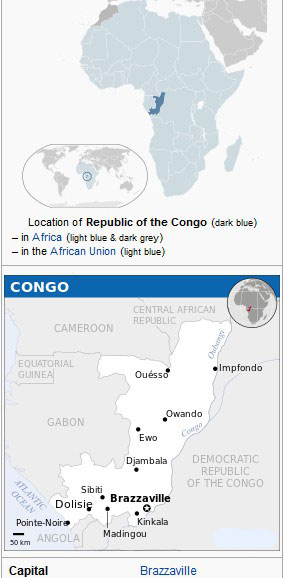


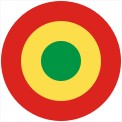
[ area 342,000 sq.km | capital: Brazzaville | population 5,2 million | GDP USD 2,500 per capita nominal ]
The Armee de l' Air du Congo (AdAC) was established after independence in 1960 with French assistance. Aircraft were a few Broussards, C-47 and a Bell helicopter. After a Marxist military coup in 1963 the new regime turned to the Soviets and acquired a pair of Antonov transport aircraft. Not earlier than the mid 1970s the first pair of MiG-15UTI and some MiG-17 fighters arrived with Cuban advisors. Later on additional MiG-17's arrived, probably totalling up to some 20 aircraft.
From 1986, the first of some 16 MiG-21bis was delivered, maybe also a pair of MiG-21PF and some 4 MiG-21 UTI trainers. The aircraft were based at Point-Noire at the coast with another base at Brazzaville Maya-Maya on the DRC Congo/ Zaire border.
As of today probably the MiG-21bis aircraft are written off so no fighters are operational. Other aircraft are some Mil helicopters and SA365 Dauphin and a few transports like AN-32, Il-76 and CASA CN325. In the North an auxiliary field at Makoua was constructed.


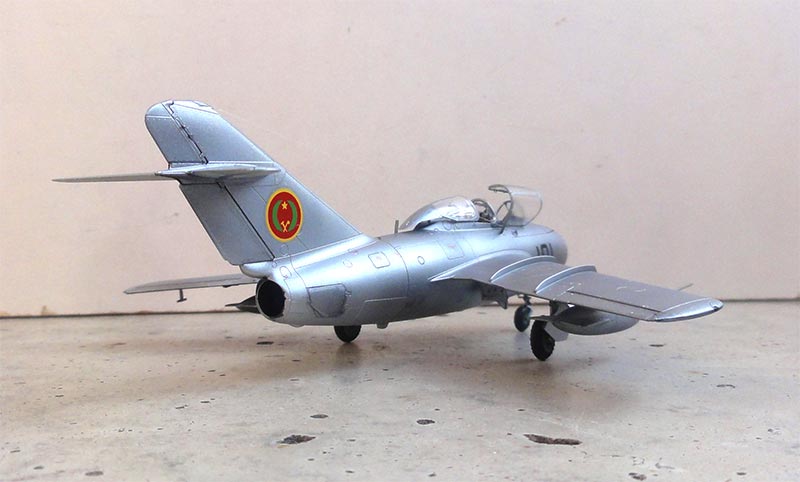
MiG-15UTI, "101", Congo Brazzaville air force, 1980

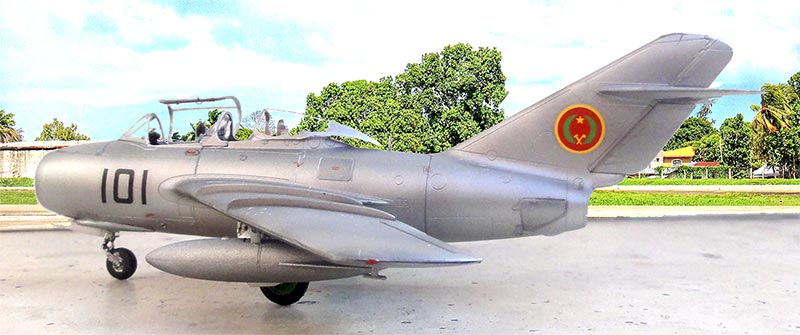
Recent Google Earth views of the Congo-Brazzaville bases at Point-Noire....
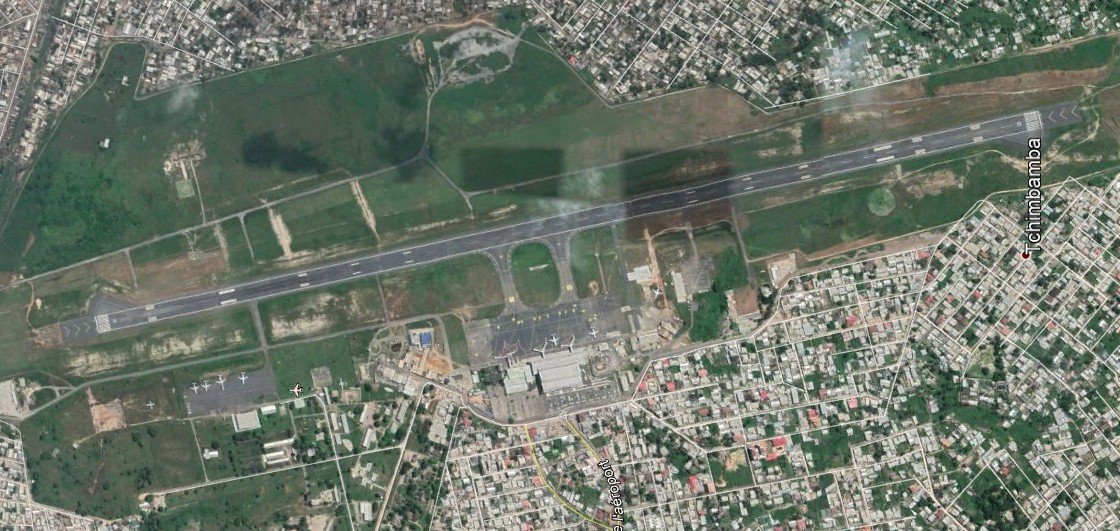
... with probably the old MiG-15 UTI "102" as gate guard seen on the grass. Note also the Noratlas.
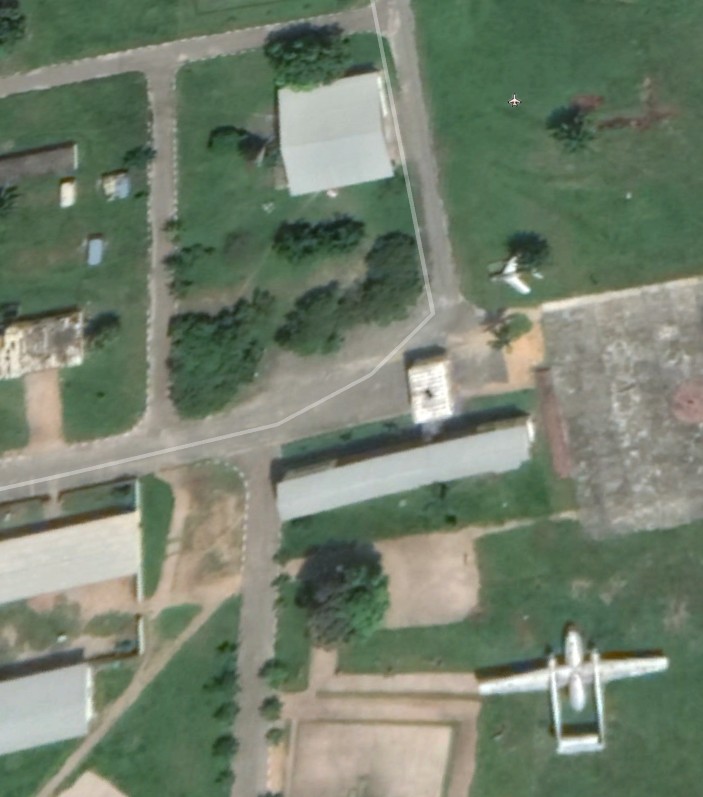
.. and at Brazzaville Maya-Maya.....
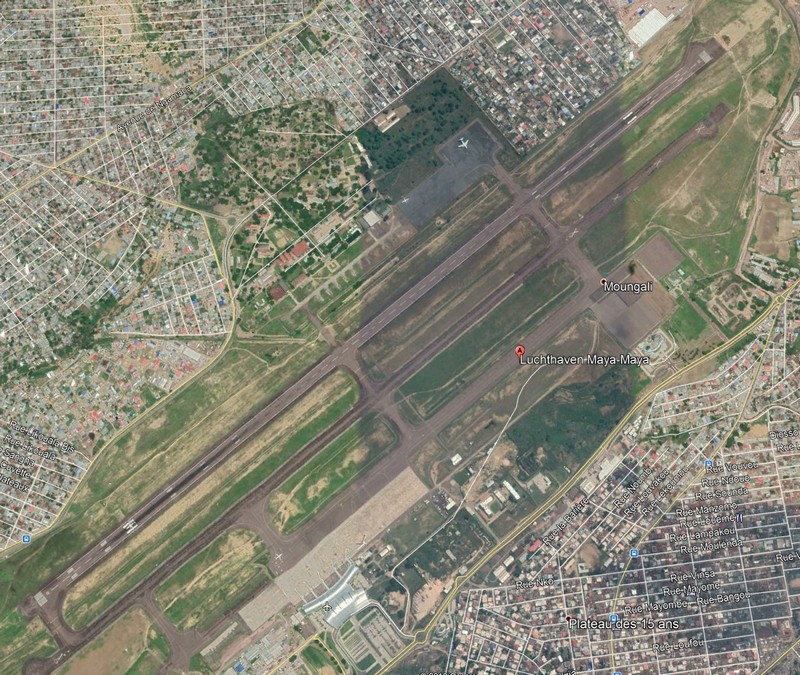
On to next [ Page 8 .... ]

(c) Copyright "designer"/ All rights reserved. Your comments are welcomed by webmaster
Created this page
August 8, 2019